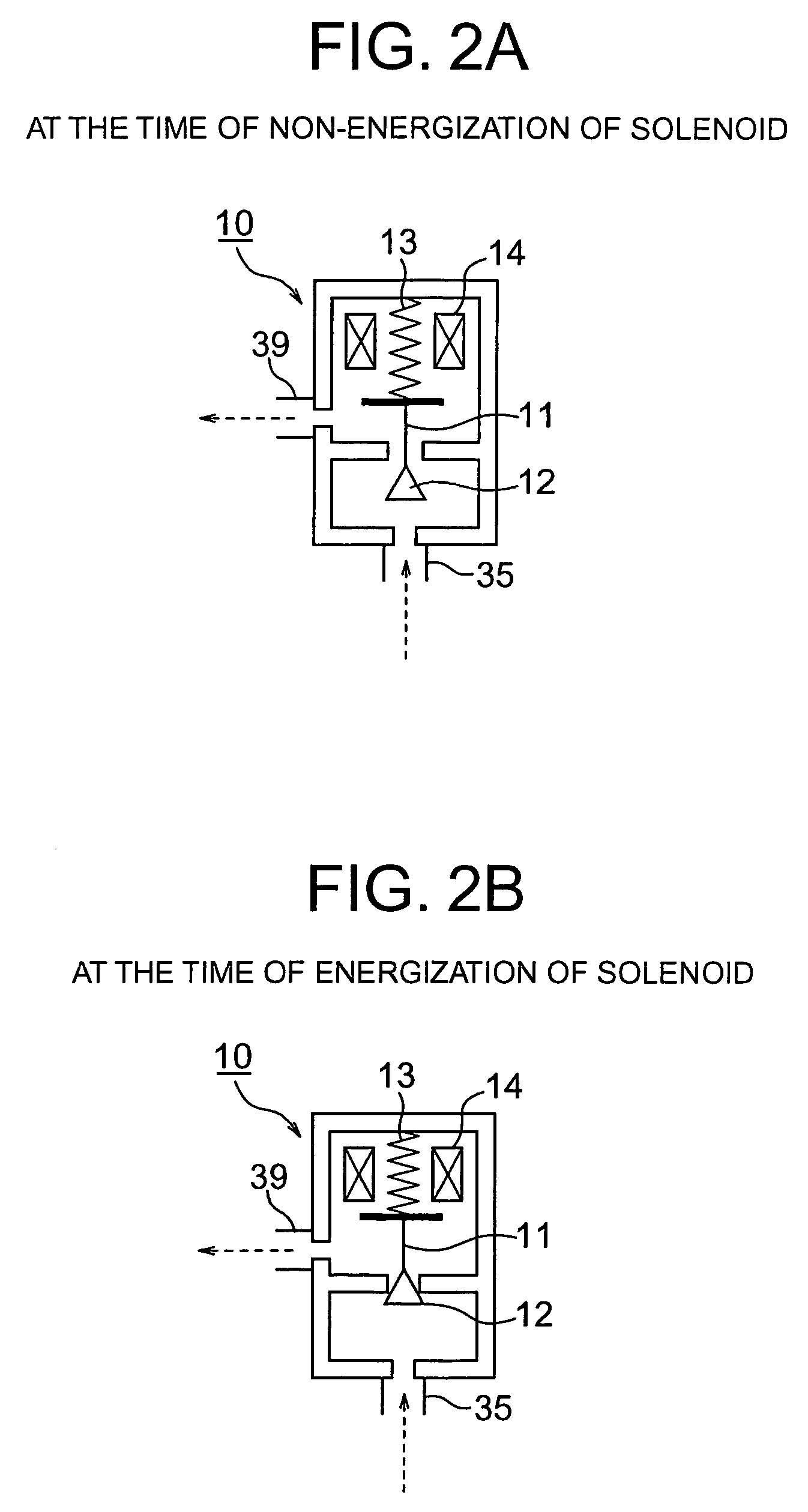Fuel pressure control apparatus for multicylinder internal combustion engine
a multi-cylinder internal combustion engine and control apparatus technology, applied in the direction of electric control, fuel injecting pump, machine/engine, etc., can solve the problems of deteriorating durability, large volume of pressure chamber, and disadvantage in sliding surface wear resistance, so as to improve the reliability of high-pressure fuel pumps and increase cost.
- Summary
- Abstract
- Description
- Claims
- Application Information
AI Technical Summary
Benefits of technology
Problems solved by technology
Method used
Image
Examples
embodiment 1
[0042]Hereinafter, reference will first be made to a fuel pressure control apparatus for a multicylinder internal combustion engine according to a first embodiment of the present invention while referring to the accompanying drawings. FIG. 1 is a block diagram that illustrates the fuel pressure control apparatus for a multicylinder internal combustion engine according to the first embodiment of the present invention.
[0043]Here, reference will be made to the fuel pressure control apparatus for a multicylinder internal combustion engine with the number of cylinders being M (M being a natural number not less than 2, and in particular M being set to 4 in this example) while using a high pressure fuel pump which has N fuel discharge strokes (in general, N being a natural number not less than 1, N20 for pressurizing fuel to a high pressure is provided with a cylinder 21, a plunger 22 that is received to reciprocate in the cylinder 21, and a pressure chamber 23 that is defined by an inner ...
embodiment 2
[0105]Though not specifically referred to in the above-mentioned first embodiment, in an internal combustion engine having a rotational phase adjustment section for adjusting the rotational phase of the camshaft 24 relative to the crankshaft, it is desirable to preset the positional relation of the first and second calculation timings so as not to change the order of occurrence of the first and second calculation timings when the rotational phase of the camshaft 24 relative to the rotational phase of the crankshaft is adjusted to the most retarded angle side or to the most advanced angle side.
[0106]Hereinafter, reference will be made to a second embodiment of the present invention that is applied to an internal combustion engine having a rotational phase adjustment section. The overall construction of a fuel pressure control apparatus for a multicylinder internal combustion engine according to the second embodiment of the present invention is the same as the one shown in FIG. 1 exce...
PUM
 Login to View More
Login to View More Abstract
Description
Claims
Application Information
 Login to View More
Login to View More - R&D
- Intellectual Property
- Life Sciences
- Materials
- Tech Scout
- Unparalleled Data Quality
- Higher Quality Content
- 60% Fewer Hallucinations
Browse by: Latest US Patents, China's latest patents, Technical Efficacy Thesaurus, Application Domain, Technology Topic, Popular Technical Reports.
© 2025 PatSnap. All rights reserved.Legal|Privacy policy|Modern Slavery Act Transparency Statement|Sitemap|About US| Contact US: help@patsnap.com



